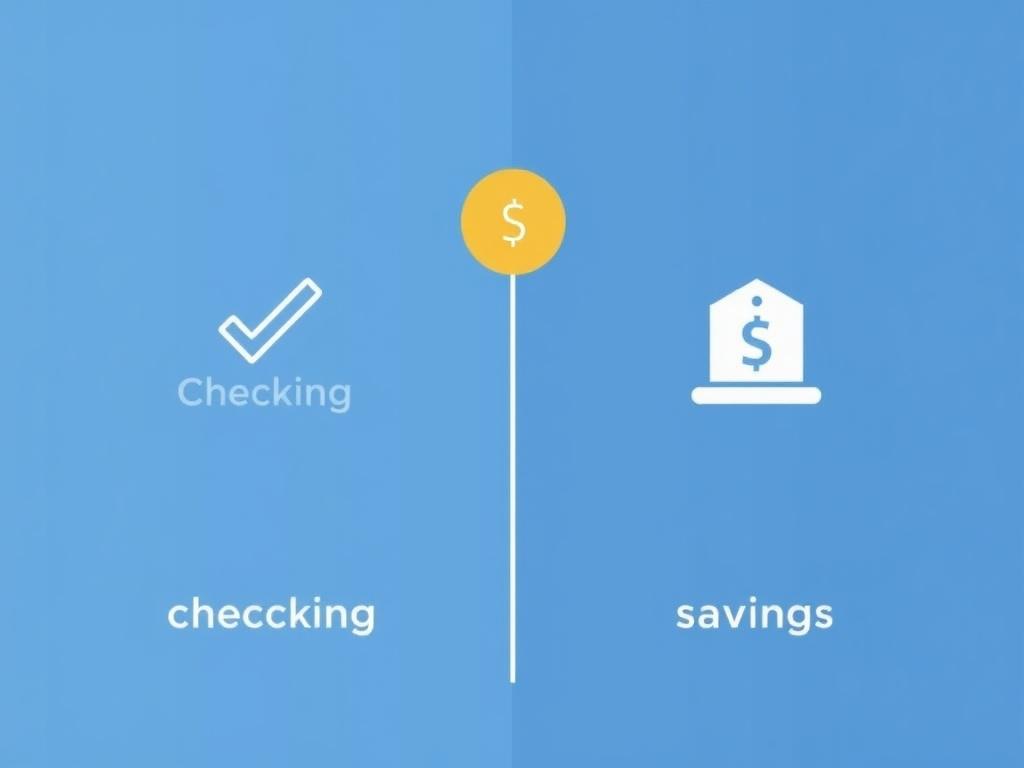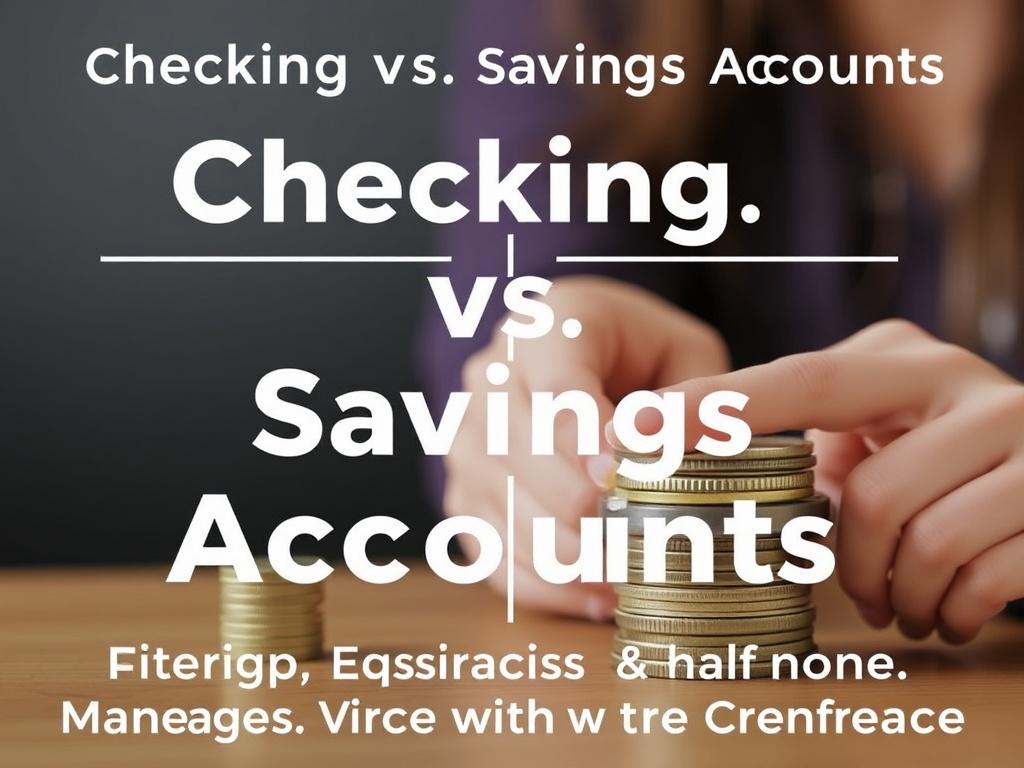SQLITE NOT INSTALLED
When managing your personal finances, understanding the different types of bank accounts is essential. Two of the most common accounts you will encounter are checking accounts and savings accounts. Both serve important but distinct purposes, and knowing the key differences between them can help you make smarter money choices. Whether you’re opening your first bank account or reevaluating your current financial setup, getting clear on these two account types will set you up for success.
Checking accounts and savings accounts might seem similar at first glance—they both allow you to deposit money and access your funds. However, they differ significantly in terms of function, features, fees, and interest rates. In this article, we will explore what makes checking and savings accounts unique, how they fit into your financial life, and which might be the best fit depending on your goals. We’ll also cover aspects such as accessibility, transaction limits, and security so that by the end, you’ll feel confident in handling your banking needs.
Содержание
What Is a Checking Account?
A checking account is primarily designed for everyday spending. Think of it as the financial hub for your monthly bills, groceries, dining out, and other routine expenses. With a checking account, you have easy and quick access to your money, often through multiple convenient methods like debit cards, checks, and electronic transfers.
Most checking accounts provide unlimited transactions, meaning you can withdraw or spend as much as you want without worrying about restrictions or penalties. This accessibility is a major reason why checking accounts are favored for daily money management.
Features of Checking Accounts
Checking accounts come with several features tailored to convenience and spending flexibility. These include:
- Debit Card Access: Instantly pay for purchases in stores or online without carrying cash.
- Check Writing: Ability to write checks to pay bills or individuals.
- Online and Mobile Banking: Manage your account, pay bills, and transfer money digitally anytime.
- Overdraft Protection: Optional service to cover purchases if you don’t have enough money, usually with fees.
- Unlimited Transactions: Make unlimited deposits, withdrawals, and transfers without fees.
Checking Account Fees
While some banks offer fee-free checking accounts, many charge monthly maintenance fees unless you meet certain conditions. Fees can also be applied for overdrafts, using ATMs outside the bank’s network, or having a balance below a minimum threshold. It’s important to review these charges before opening an account, especially if you’ll be using your account frequently.
What Is a Savings Account?

Savings accounts, on the other hand, are designed to help you set money aside and grow your funds through interest payments. Unlike checking accounts that emphasize accessibility, savings accounts focus on encouraging you to save by placing certain limits on withdrawals and offering better interest rates.
If you have a financial goal—whether it’s building an emergency fund, saving for a vacation, or putting aside money for a down payment on a home—a savings account is a great place to park your money safely and earn a small return over time.
Benefits of Savings Accounts
Savings accounts have several advantages that encourage disciplined saving:
- Interest Earnings: Most savings accounts offer interest, allowing your balance to grow gradually.
- FDIC Insured: Like checking accounts, savings accounts are insured up to $250,000, protecting your money.
- Limited Access: Designed to discourage frequent withdrawals, promoting long-term saving habits.
- Low Risk: Savings accounts typically don’t expose your funds to market risks like investments might.
Withdrawal Limits and Rules
A key difference between checking and savings accounts lies in the restrictions on transactions. Federal regulations usually limit the number of certain types of withdrawals or transfers from savings accounts to six per month. Exceeding this number could result in fees or the conversion of your account to a checking account.
Comparing Checking and Savings Accounts Side by Side
To really understand how checking and savings accounts differ, it helps to see their features matched up against each other. The following table provides a clear comparison of these two important banking tools:
| Feature | Checking Account | Savings Account |
|---|---|---|
| Primary Purpose | Daily transactions and bill payments | Saving money and earning interest |
| Access to Funds | Unlimited withdrawals and transfers | Limited withdrawals (usually 6 per month) |
| Interest Rate | Usually low or no interest | Typically higher than checking accounts |
| Fees | Possible monthly fees and overdraft charges | Potential fees for excessive withdrawals |
| Transaction Methods | Debit card, checks, online payments | Transfers, ATM withdrawal (may be limited) |
| Minimum Balance Requirements | Varies by bank | Varies; often modest minimums to earn interest |
| FDIC Insurance | Up to $250,000 | Up to $250,000 |
Which Account Should You Choose?
Choosing between a checking and a savings account really depends on your financial habits and goals. Let’s break down some common scenarios to help you decide:
- If you need everyday access to your money: A checking account makes the most sense. It allows you to quickly pay bills, shop online, and withdraw cash as needed.
- If you want to build an emergency fund or save for the future: A savings account encourages you to keep money untouched and benefits you by earning interest.
- If you want both flexibility and growth: Many people maintain both accounts—using the checking account for daily expenses and linking it to a savings account for additional savings and interest.
Using Both Accounts Wisely
In practice, most consumers benefit by having both a checking and savings account. This combination offers financial freedom and security. Here’s how to maximize their use effectively:
- Automate Transfers: Set up automatic monthly transfers from your checking to savings to build wealth without effort.
- Monitor Balances: Keep enough funds in checking to cover bills and purchases, but avoid letting excess cash sit idly without earning interest.
- Avoid Excess Withdrawals: Be mindful of the withdrawal limits on savings accounts to prevent fees or account changes.
- Shop Around: Compare interest rates and fees at different banks when choosing accounts to find the best fit for your needs.
How Interest Rates Impact Your Accounts
One of the most important distinctions between checking and savings accounts is the interest rate. Although interest rates have been relatively low in recent years, savings accounts generally provide better returns than checking accounts. This means the money you stash away can grow over time, helping your savings work harder for you.
It’s important to understand that the interest earned varies depending on the type of savings account and the financial institution. Some banks offer high-yield savings accounts with significantly higher interest rates, often provided by online banks that save on overhead costs. Conversely, most checking accounts pay little to no interest because their main role is facilitating transactions, not growing your balance.
Understanding APYs
When comparing interest rates, you will see the term APY, or annual percentage yield. This figure takes into account compound interest that accumulates on your balance throughout the year. Higher APYs mean more growth in your savings. Even a small difference in APY can make a meaningful difference over the years.
Security and Protection: Checking Vs. Savings

Both checking and savings accounts provide strong security measures to protect your money. Banks are insured by the Federal Deposit Insurance Corporation (FDIC) in the United States, which protects you up to $250,000 per depositor, per bank.
Additionally, banks offer fraud monitoring, online alerts, and protection against unauthorized transactions. Checking accounts, which are more frequently accessed, tend to offer immediate alerts for suspicious spending, while savings accounts benefit from the lower risk of frequent access.
Tips for Account Safety
- Use strong, unique passwords for online banking.
- Enable two-factor authentication when available.
- Regularly review statements to spot unauthorized charges.
- Keep your debit card and checks secure at all times.
Common Myths About Checking and Savings Accounts
Many people hold misconceptions about these accounts, which can affect how they manage their money. Let’s debunk a few common myths:
- Myth: Savings accounts don’t pay any interest. While the rates may be low, savings accounts almost always pay some interest, which helps your money grow.
- Myth: Checking accounts always have high fees. Many banks offer free checking accounts or waive fees with minimum balances or direct deposit.
- Myth: Savings accounts are harder to open than checking accounts. Both accounts typically have straightforward application processes.
- Myth: You can’t use savings accounts for everyday expenses. While savings accounts have withdrawal limits, they can be used for emergency funds or infrequent large purchases if needed.
How to Open a Checking or Savings Account
Opening a checking or savings account is simple and can often be done online or in person. Here’s a quick checklist to get started:
- Choose the bank or credit union that best fits your needs—consider interest rates, fees, and accessibility.
- Prepare identification documents such as a driver’s license or passport.
- Provide your social security number for tax reporting.
- Make an initial deposit if required (minimums vary).
- Set up online access to manage your account conveniently.
Many banks even allow you to open both checking and savings accounts at the same time, which can streamline your banking experience.
Final Thoughts: Managing Your Money with Confidence

Understanding the key differences between checking and savings accounts empowers you to make better choices for your financial health. Checking accounts offer convenience and flexibility for daily spending, while savings accounts provide a safe place to store money and earn interest over time. Balancing both types of accounts can help you stay organized, prepare for unexpected expenses, and achieve your financial goals.
Remember, the best choice depends on your personal needs and habits. Regularly reviewing your accounts, automating savings, and staying informed about fees and rates will keep your finances on track. By mastering the basics of checking and savings accounts, you lay a strong foundation for a secure and prosperous financial future.
Conclusion
Both checking and savings accounts play vital yet distinct roles in managing your money effectively. Checking accounts excel in offering easy access for everyday transactions, while savings accounts encourage financial discipline and growth through interest earnings and withdrawal limits. Knowing their key differences—from fees and access rules to interest rates and security—helps you tailor your banking choices to fit your lifestyle and goals. By thoughtfully using both account types, you can create a balanced financial toolkit that supports living well today while preparing for tomorrow. Whether you’re just starting out or reassessing your finances, understanding these differences gives you greater control and confidence in your money management journey.
Опубликовано: 22 July 2025 Кредитрон – блог о кредитах, финансах и прочих реверансах
Кредитрон – блог о кредитах, финансах и прочих реверансах

